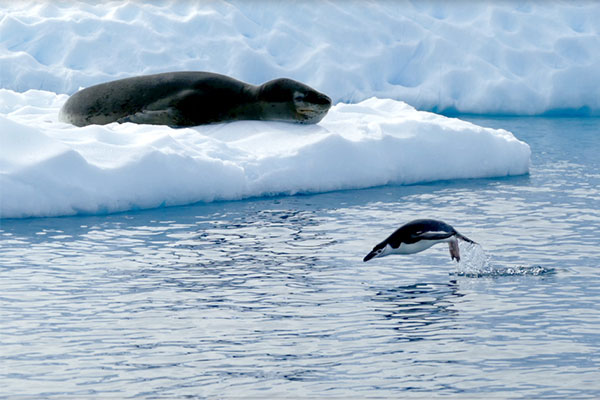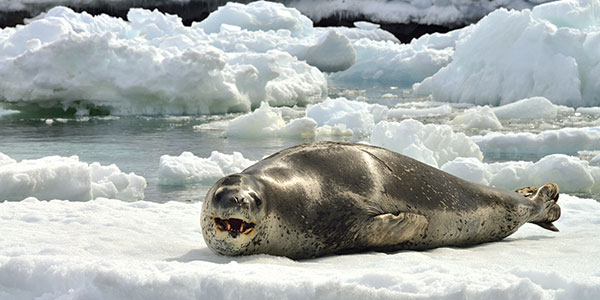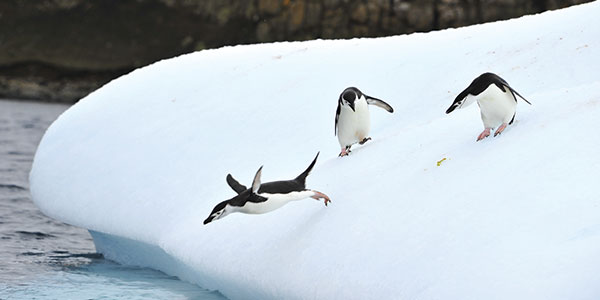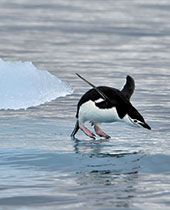
Being so out in the open and, as a result, so visible to the seal might seem like a problem for the penguin. Leopard Seals are, after all, powerful swimmers that can usually move quicker than the flightless birds. A penguin underwater, however, can maneuver with torpedo-like bursts of speed and abrupt changes in direction. A Leopard Seal could well catch up to and capture a penguin in an all-out chase, but energy-wise, it would come at a cost. It may then be to this Chinstrap’s advantage that it is in such an unobstructed position in relation to the seal and in a patch of open sea. The chase might just not be worth the while for this seal.

A hulking predator with major energy needs still needs its calories, though, so what is the alternative to jumping in the water and chasing this Chinstrap? Well, interestingly enough, the alternative may well be another Chinstrap – that is, another Chinstrap in a vastly different situation.
In the Antarctic summer, where you see one Chinstrap, you likely see a few more – 100, 000 or so more in some colonies. Parents in a mated pair share incubation and chick-tending duties, so adults are forced to come ashore…and then return to the sea to feed. That’s where Leopard Seals come back into the picture. A big part of why Leopard Seals endure as apex predators in the southern seas is their diverse repertoire of hunting techniques. In addition to chasing, they will also stalk, flush, and ambush – and a mid-sized penguin jumping back into the sea for its own hunting foray is the perfect situation for an ambush. More than likely, it will be a procession of penguins jumping back into the water to feed. In a colony of more than 100, 000 penguins, these processions are hardly rare. A successful ambush begins with the Leopard Seal lurking just beneath the water’s surface before lunging for its prey’ legs and thrashing it back-and-forth. It’s a quick and violent death for the penguin that requires far less energy for the Leopard Seal than an open water chase.




